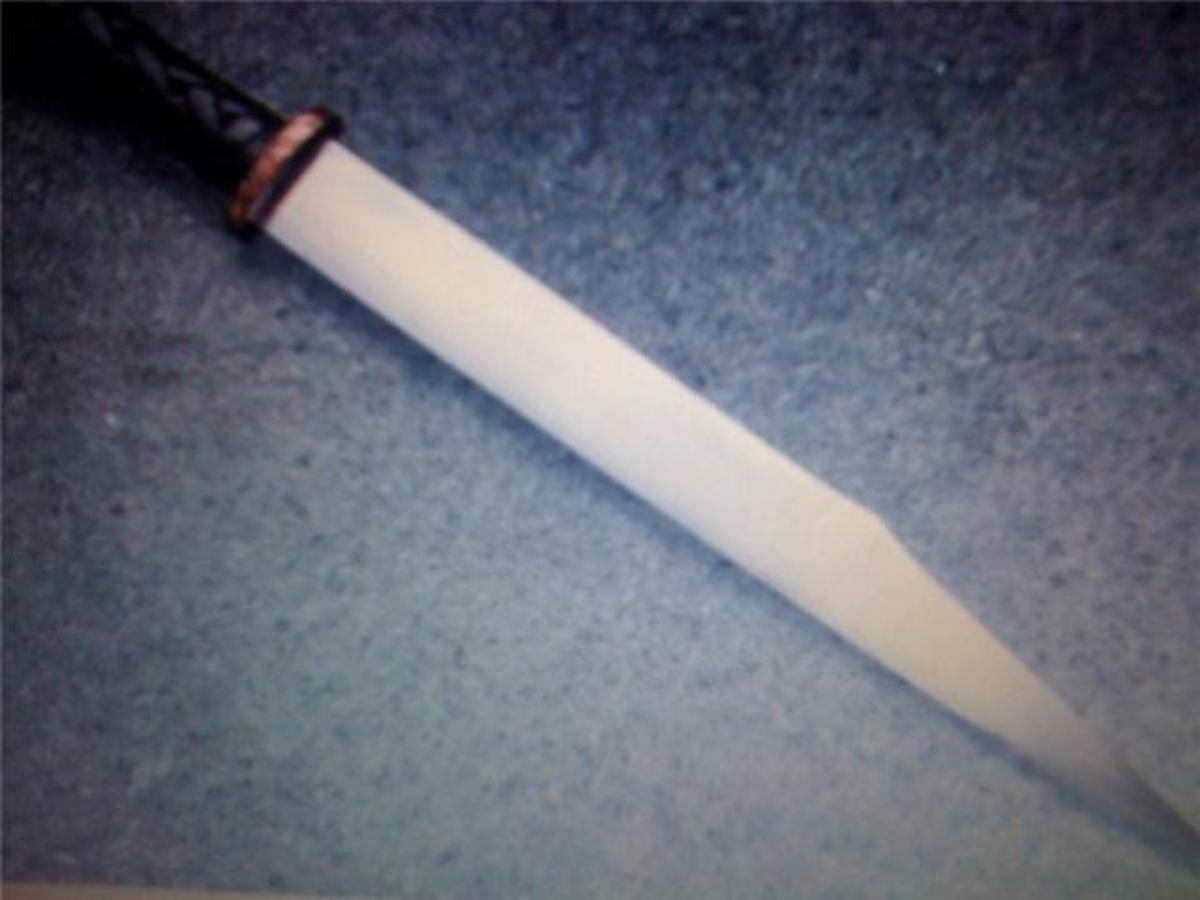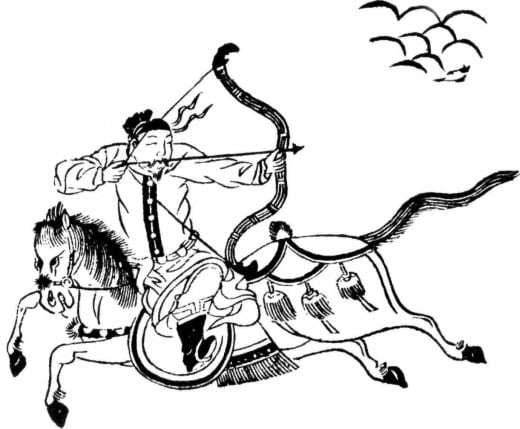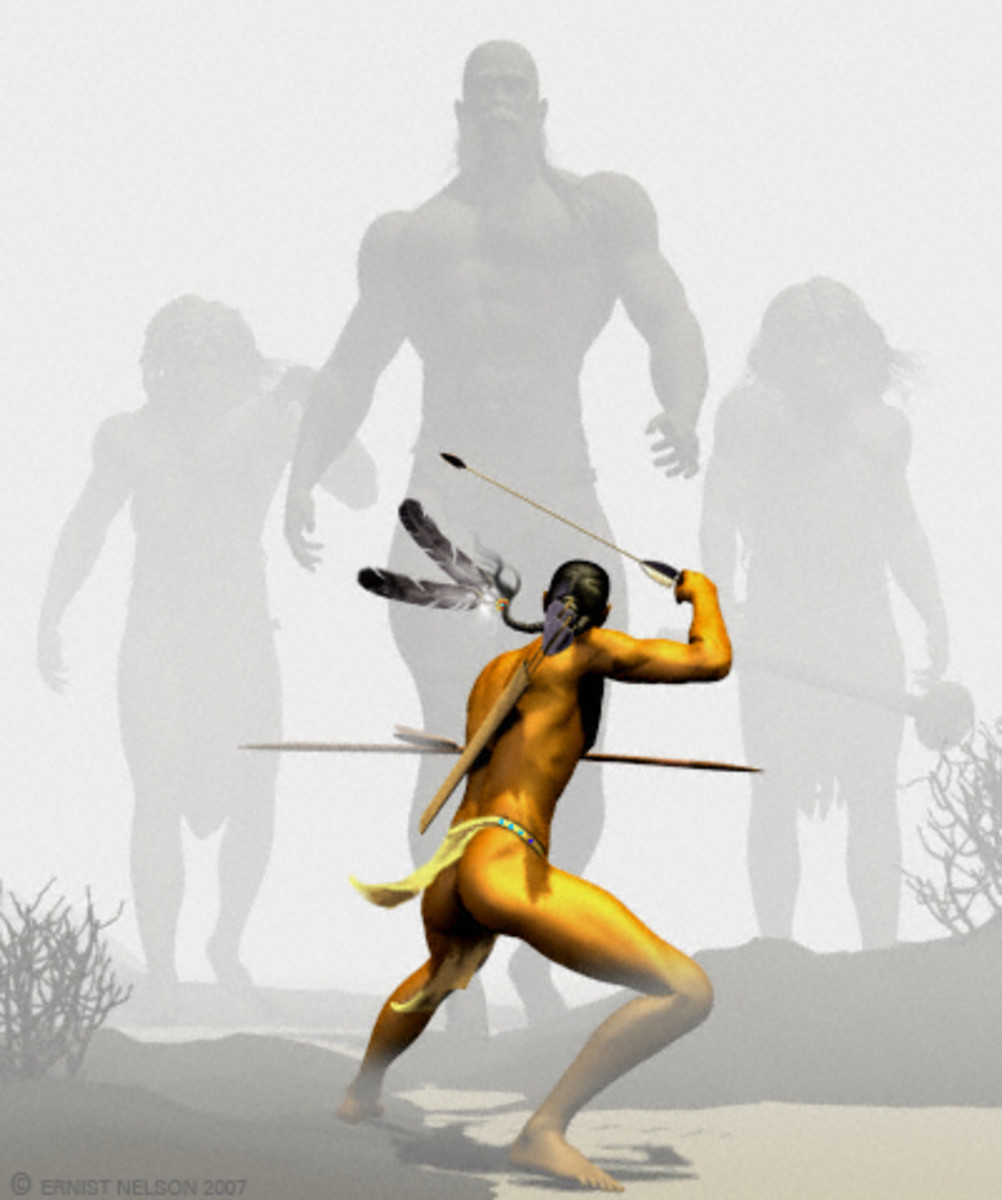Lethal Weapons of Our Distant Past.
Tools That Kill.
The ability of our ancestors to construct effective and lethal weapons is, without doubt, the primary reason why we are all here today.
The weapons of our ancestors have allowed us to conquer enemies, protect our homes, reinforce our national sovereignty and more importantly provide us with food. In our distant history, the human-animal used its greater hand dexterity and our own primate intelligence, to form crude instruments to tilt the balance of power and nature in our favour.
Whether or not the weapons of our past were originally designed for hunting prey or defending territory is a question I for one would not be prepared to answer. The earliest humans would have fashioned spears, bows and slings to augment their arsenal of projectile weapons such as rocks.
Archaeological finds have found materials that we assume to be primitive arrowheads which date to prehistoric times. Lethal weapons such as these, have changed very little until the advent of the mass-produced age we live in today.
A Germanic Bladed Weapon

Lethal Weapons.
The technology of our current age has also refined and optimised the weapons of our past. Today, we have bows made of carbon fibre and steel, which owes more now to engineering than the artisan craft of bowyering. I would argue though, that the modern sports style bow lacks the style and beauty of a painstaking hand-made traditional re-curve horse-bow. But both bows would obviously have their own merits, and in the right conditions are both extremely lethal.
Our current technology has given us more precise, durable and lethal weaponry. At the most deadly end of our innovations, our scientists have created a more effective tool for killing and maiming. Many of our armed forces possess weapons which can obliterate cities and destroy the works of nature. Our ability to split atoms results in the potential for mass destruction or total global annihilation. We now have the ability to use biological and chemical agents to remove our enemies from their own lands.
The Renaissance had similar weaponry, The Roman Catholic Church passed edicts stating that weapons such as the crossbow were the weapons of the Devil and were unholy. This was due to the body count and carnage, the weapon was responsible for.
Better Weapons, Greater Victories.
All of the great imperial nations owe their supremacy to a weapon which was superior to whatever their opponents possessed. The British Empire used its rifles to suppress the African tribes' spears. The Mongolian tribes used their horse-bows to terrorise their rivals and the Vikings used their longboats to raid and navigate where other peoples could not penetrate. Every culture has developed its own type of weapon which has given them a tactical advantage in a conflict.
The following weapons that I have highlighted, are a small, varied and obscure selection from our distant history.
The Scorpion.
The Scorpion was a weapon that struck fear into the hearts of the enemies of the Roman Empire. The Scorpion was deployed with every legion, were these formidable projectile weapons were used to great effect. The Scorpion propelled a spear-shaped projectile weapon at great speed and with deadly accuracy.
The Scorpion was able to decimate advancing enemy infantry and was of great value in demoralising its opponents. The Scorpion was less of a siege weapon and more of a forerunner of a cannon.
As an artillery piece, the scorpion was used throughout the Western and Byzantine Roman Empire. The Cannon eventually replaced the Scorpion in the Byzantine Empire, when cannons became more fashionable and more lethal with their larger blast radius.
Scorpion Ballista
The Recurve Horsebow
The Recurve Horsebow was used extensively by the Eurasian tribes in their efforts to conquer lands and raid enemies loot. The Recurve Horsebow was a light cavalry weapon which allowed the rider to operate quickly with "Hit and Run" tactics. The Mongolian Golden Hoard put this weapon to great use in conquering an area from modern-day China into Russia and Eastern Europe.
The Horsebow was much smaller than the "English" Longbow and was crafted using wood, horn and sinew. The Horsebow was able to shoot greater distances, due to the stored kinetic energy from the bows compressed design. The distance an arrow could fly was dependant on the archers own draw-strength, and special arrows were designed to limit the distance they could travel. The design of this lethal weapon allowed a mounted horseman to fire multiple arrows off at the enemy, and skilled warriors could fire these off at speed.
The Recurve's design was used by Magyar, Avars, Tartars, Mongolians and other Turkish tribes. All the designs followed a similar style, but each culture added its own identity to it. A Horsebow was held in very high regard by their owners and their construction and maintenance was a labour of love
A Powerful Projectile Weapon

Greek Fire
Greek Fire was originally developed by the Greeks and in later periods used by the Byzantium Empire in their conflicts with the Caliphates of the Arab world. Greek Fire is mentioned by many historic sources and was very effective at destroying enemy ships and infantry. The formula for Greek fire has been lost to history, but it is thought to be very similar in composition to modern-day Napalm. There are historical evidence and sources, stating how Greek Fire was able to continue burning underwater.
Greek fire was primary used in a defensive capacity, it was very useful in siege situations. There is also evidence suggesting that Greek fire stopped massive Viking raids in the 8th to 10th centuries. The devastation Greek Fire would have wreaked on a Viking armada would have been catastrophic.
The Super Weapon From the Age of Antiquity.

The Steel Fan.
Many cultures from the far east used the ornamental fan as a deadly instrument of pain. The fan was used throughout the Oriental lands and the weapon was often used in the dominate cultures of Korea, China and Japan The Steel Fan was suited to a more one on one confrontation or a sneak attack. The Steel Fan was more the weapon of an assassin or a warrior who liked to have a concealed weapon.
Most of the Japanese art depicts Steel Fans and fans constructed from other materials in the hands of women. The Steel Fan would not traditionally be a weapon seen on the battlefield, as it was usually associated with dishonour and deception( A ninja would have such a weapon in their arsenal ). The Steel Fan's key attribute was its ability to be used as a quick and stealthy weapon, on the battlefield a warrior would expect to be attacked. This would mean the element of surprise would be lost.
Which weapon listed is the most lethal
A Lethal Design is a Lasting Design
Today we think of some of the ancient weapons as barbaric and lacking modern standards of reliability. I would argue that the current weapons mass-produced by machines lack the character and craftsmanship of their forerunners. I think that we overlook the achievements of our ancestors. With the primitive technology and scarcity of raw materials, the weaponsmiths of their time really were masters of their craft.
Other Related Hubs
- Why did the Roman Empire not spread and conquer the ...
It could be strongly argued that the Imperial Roman Empire was responsible for defeating, and dominating most of the known civilizations back in the ancient world. I wonder if it would have been possible for... - Weapons of the Vikings
The Vikings conquered and spread their influence through most of the continent of Europe. The Vikings were able to use their superior seamanship and military might to take over large tracks of Europe, many...
This content is accurate and true to the best of the author’s knowledge and is not meant to substitute for formal and individualized advice from a qualified professional.
© 2011 Andrew Stewart



